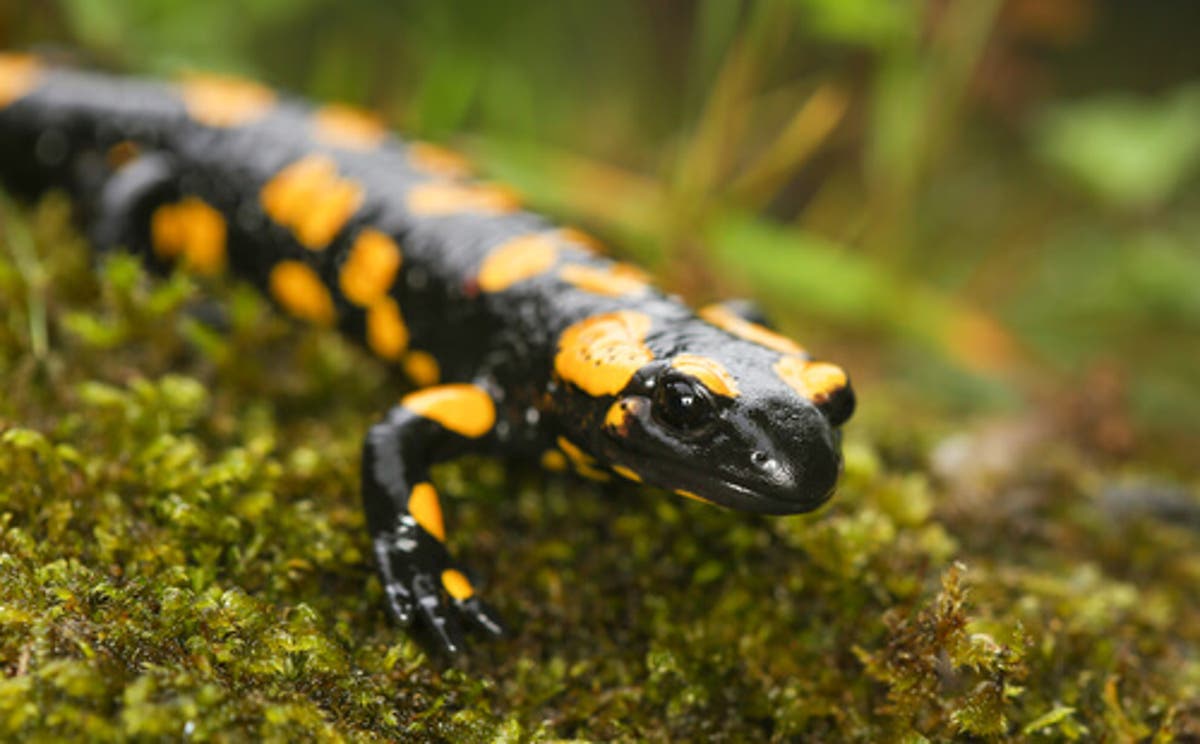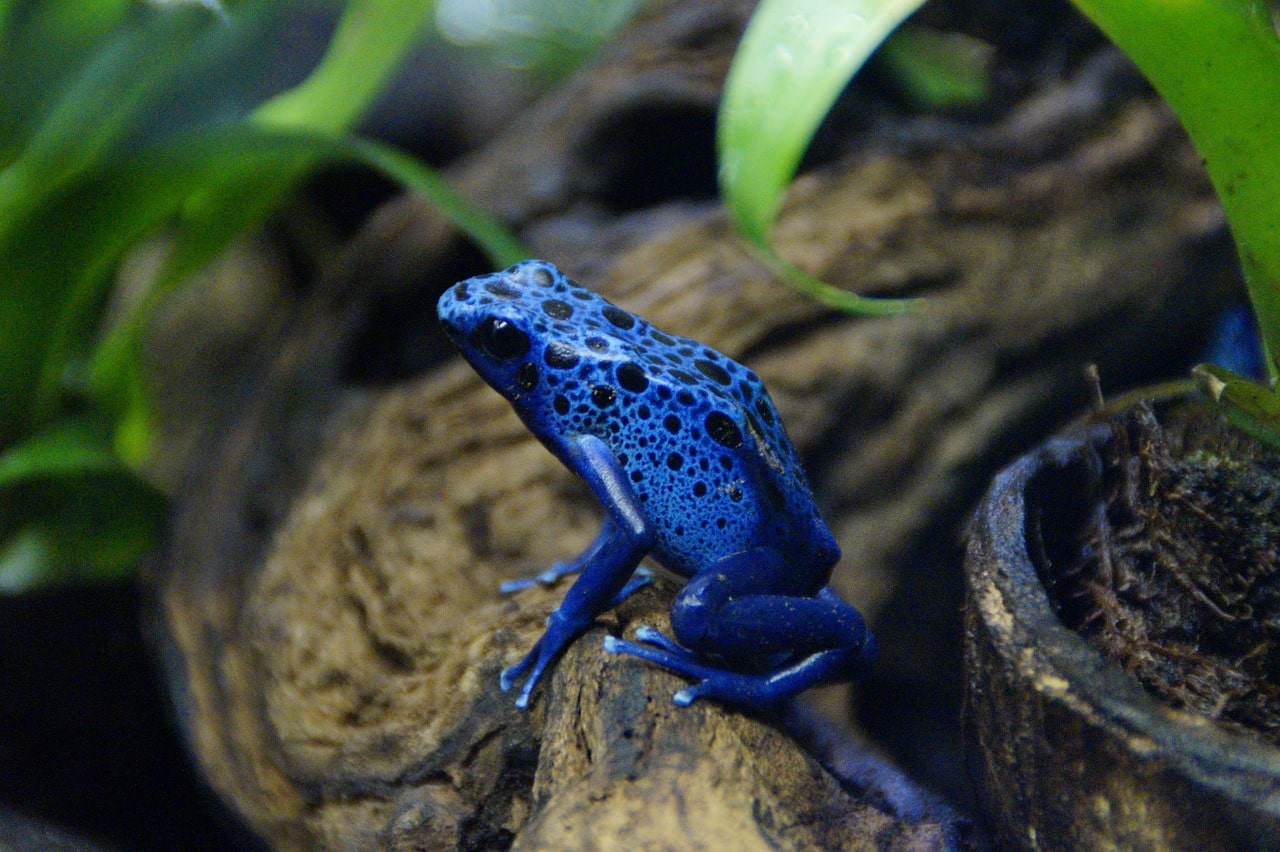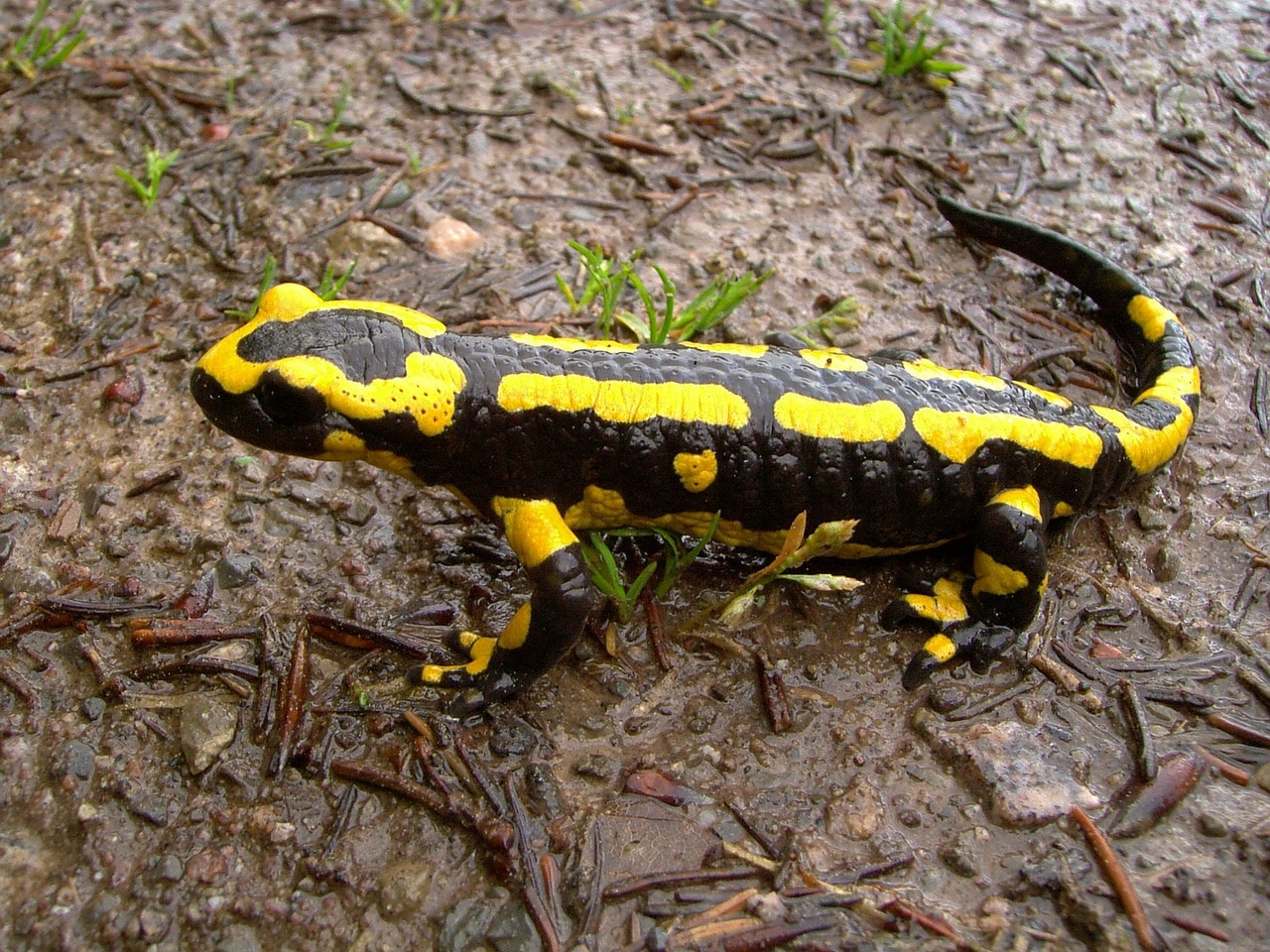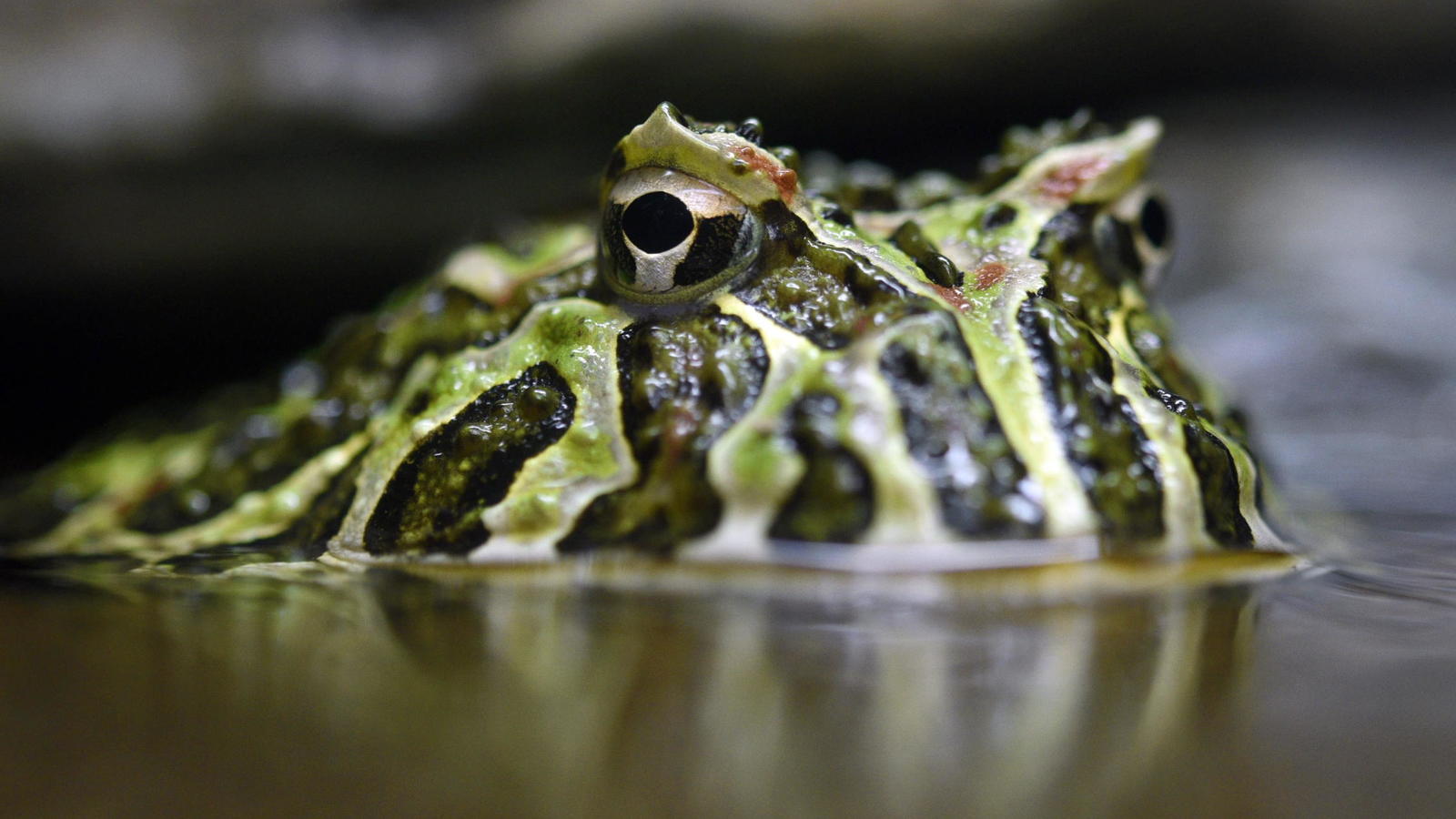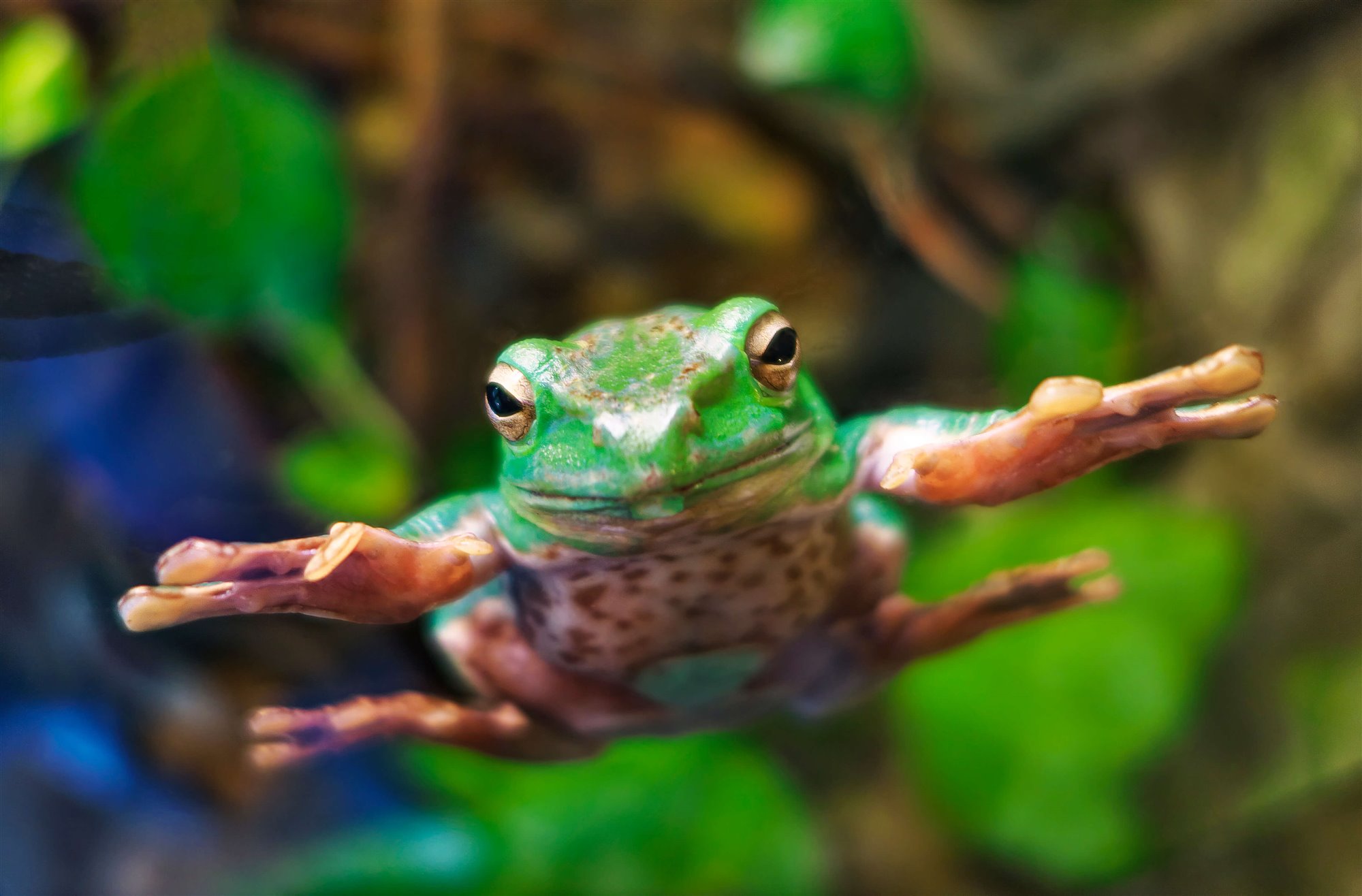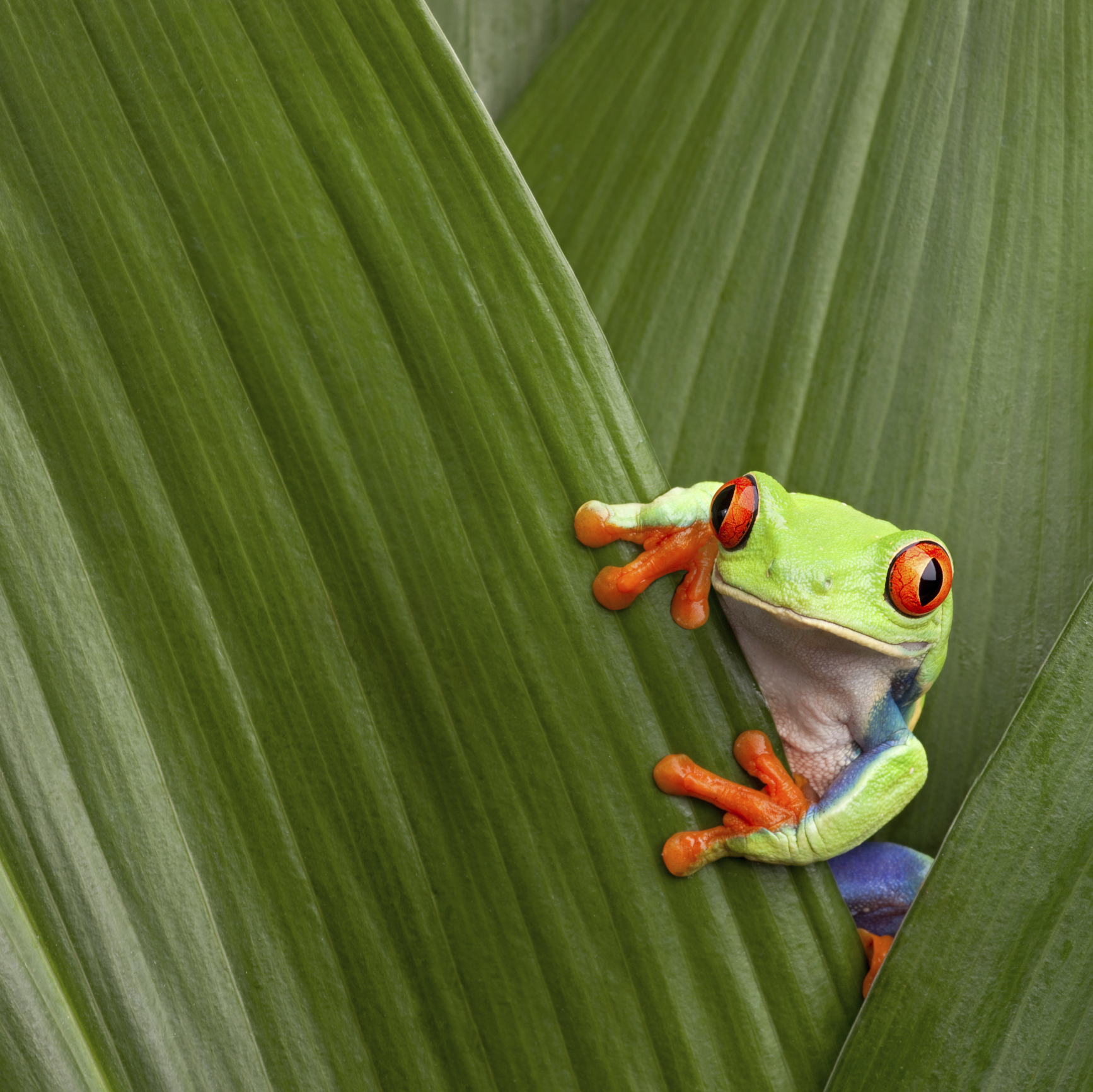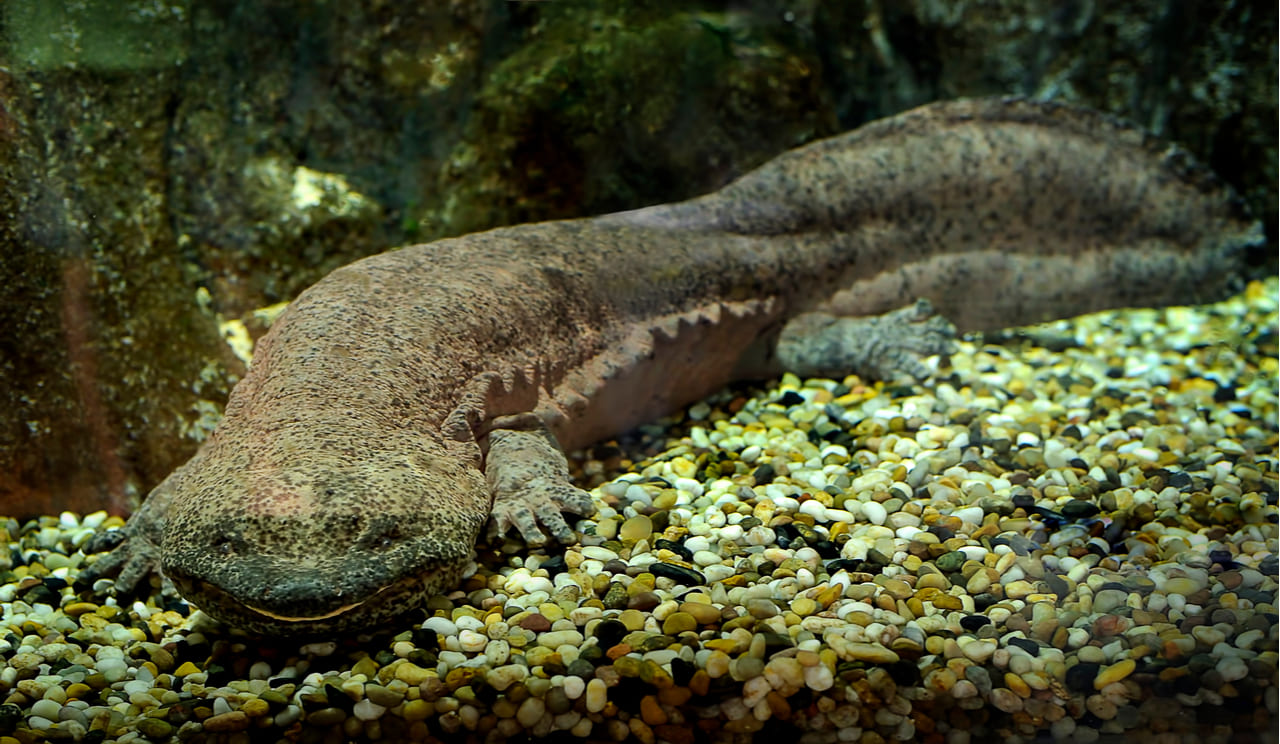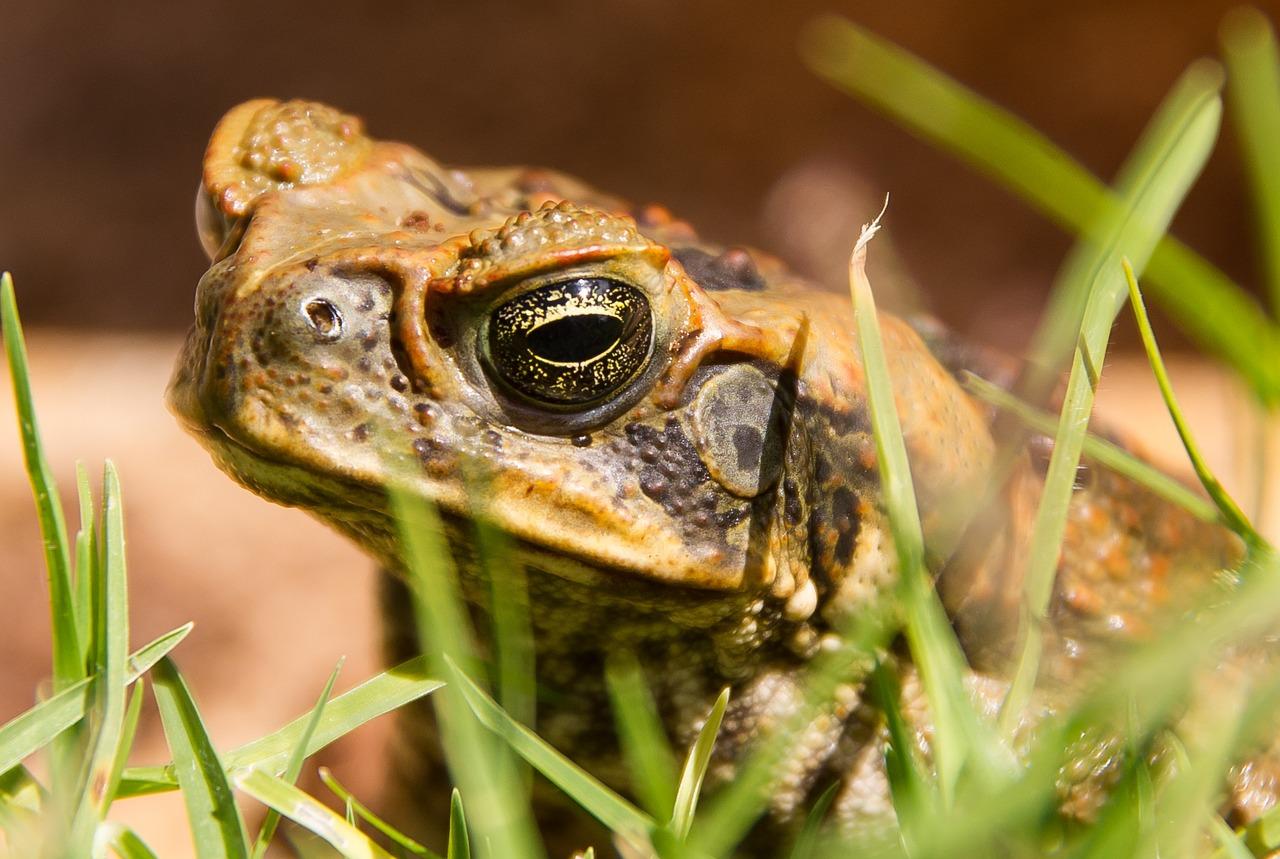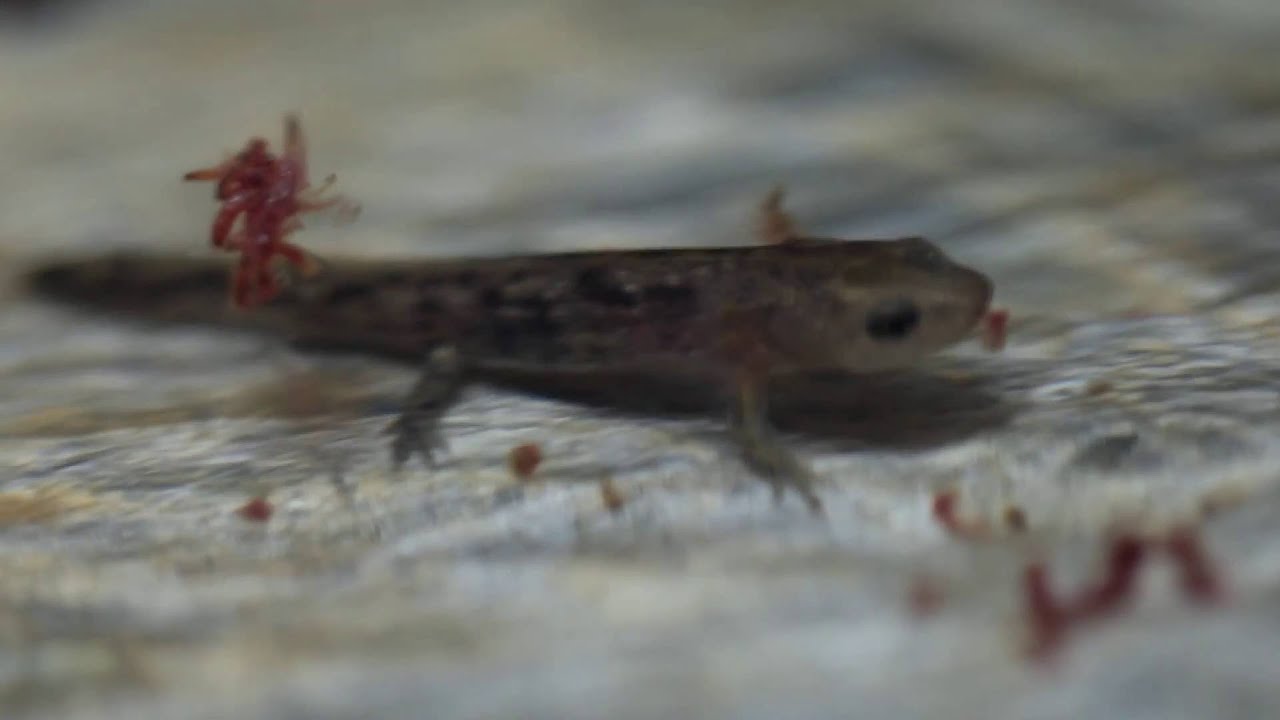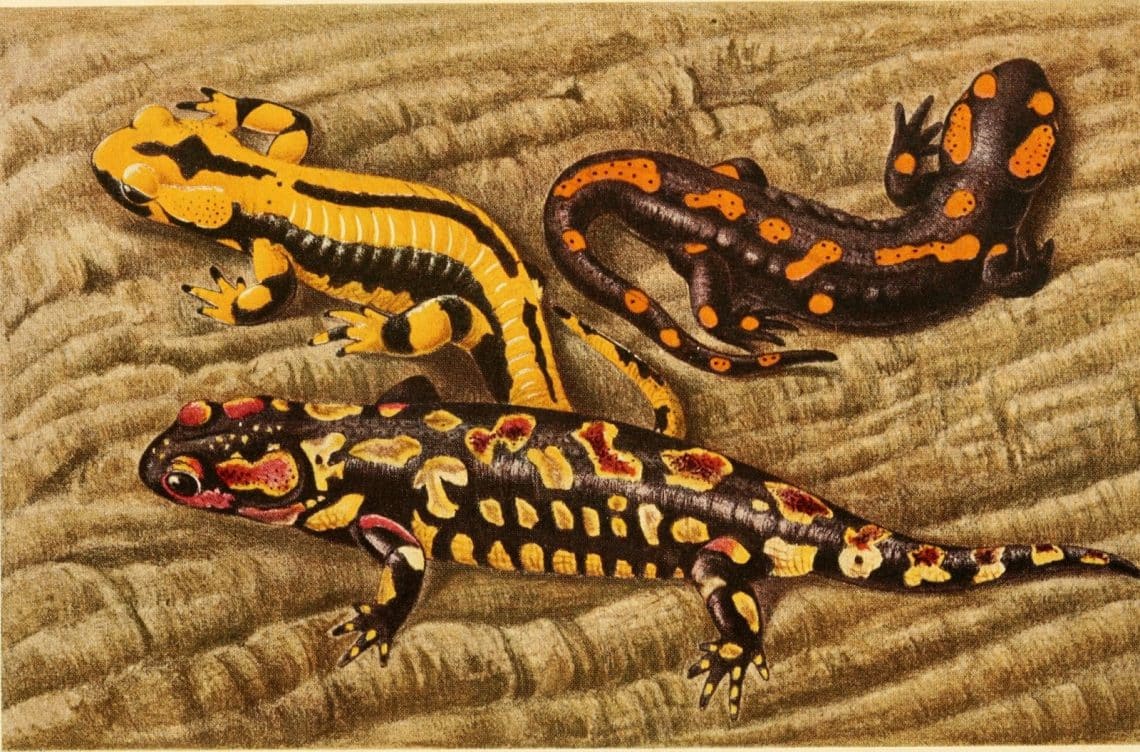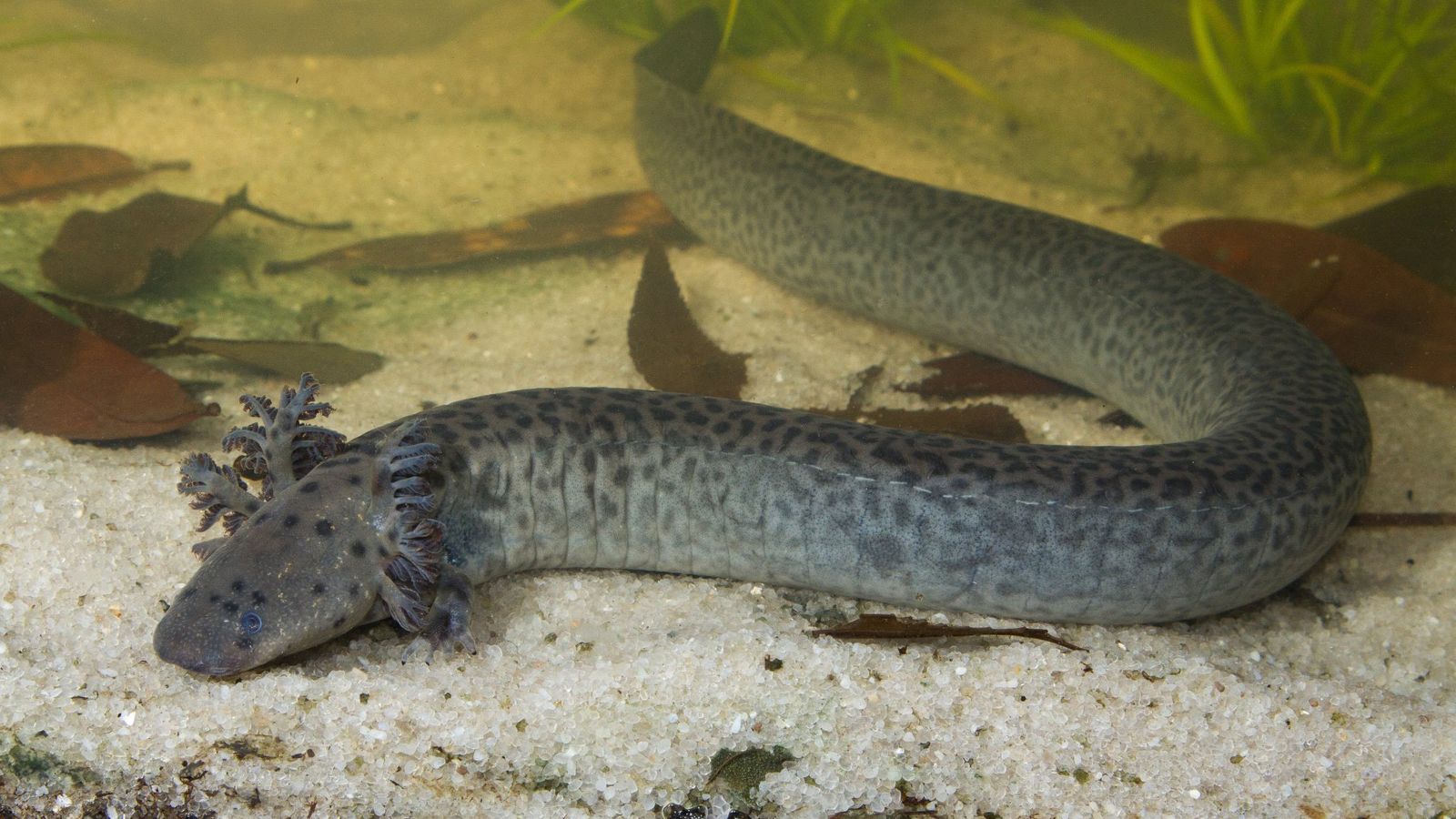It can be affirmed that the Amphibian Animals were the first that managed to leave the aquatic environment to establish their habitat in the terrestrial ecosystem. But they did not manage to abandon it completely, so they continue to subsist between the water and the land. If you want to know more about the way of life of Amphibian Animals, we invite you to read this information and clarify your doubts about these very special living beings.
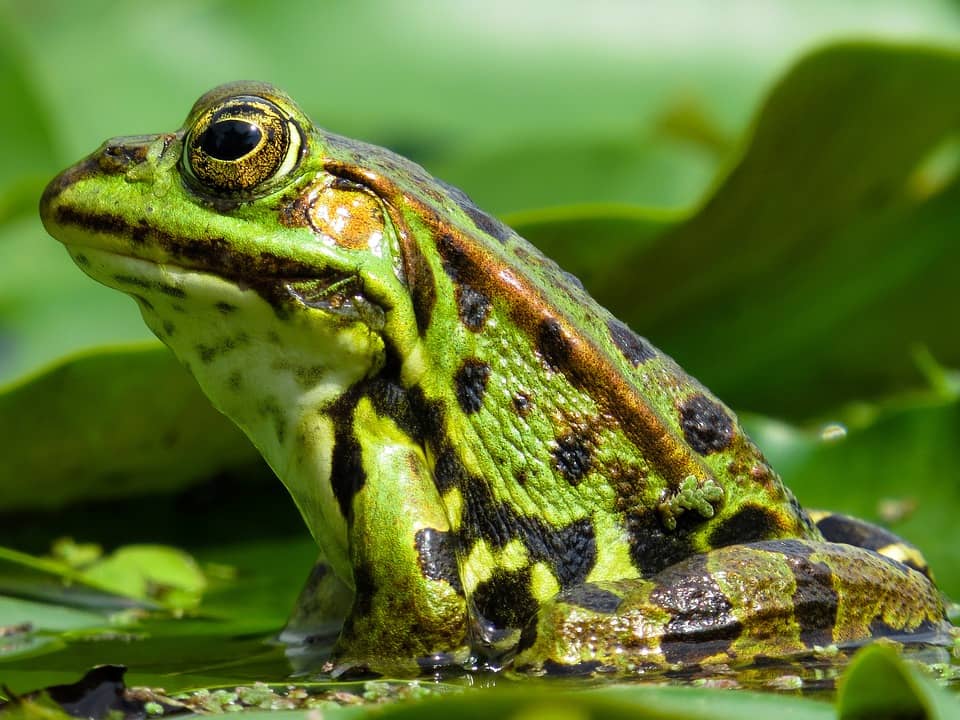
What are Amphibians and where do they live?
Amphibian animals are animals that belong to the vertebrate family and have a life cycle in which they combine aquatic stages with stages. The biodiversity of their habitats is restricted due to the succession of cycles in which they subsist, as well as the fact that they are not homeotherms, that is, they are cold-blooded animals.
Being cold-blooded prevents them from having a constant body temperature. For that reason it is very rare that amphibian animals can be found in low temperature areas. This is the main reason why they do not live in places like Antarctica or the Arctic, although fossil creatures of them have been found in those places, proving that in a very remote past they were able to inhabit those lands.
Metamorphosis
In addition to their inability to maintain a standardized body temperature, they have a characteristic that is very curious in the animal world and makes them very versatile creatures: metamorphosis.
Metamorphosis is an evolutionary adaptation that made it possible for amphibian animals to transform from birth as tadpoles to adult animals, causing not only morphological changes, but also changes in their type of feeding and breathing.
Amphibian Classification
Amphibian animals have been classified into three orders, by virtue of the fact that they have different adaptive requirements, therefore, despite the fact that they can subsist within the same habitat, it is common to observe that they live in different biomes. These three orders are:
- Medals gymnophiona (or legless amphibians): which includes large amphibian animals, but do not have extremities, such as caecilians or tapaculos. Within this classification we can find the apodes, which are the amphibian animals that withstand cold temperatures less, so they regularly live in tropical and subtropical areas.
- Medals Anura: They are amphibian animals that have legs, but do not have a tail, such as toads or frogs.
- Medals caudata: Newts, axolotls, and salamanders are included in this classification.
Amphibians that live in areas with low temperatures
As we mentioned, amphibian animals that can live in colder environments are very rare. Despite this, we can find some, usually they are amphibians that belong to the order of anurans or salamanders. An exceptional case is that of the Siberian salamander (Salamandrella keyserlingii), whose habitat is located in the northern region of Siberia, or the forest frog (Lithobates sylvaticus), which lives in the northernmost part of North America, made up of Alaska and Canada.
Due to their characteristic that they are cold-blooded animals, they enjoy several evolutionary adaptations, thanks to which they can live in cold climates, one of them is the ability to hibernate under the ice, in winter periods, or the presence of substances antifreeze in the chemistry of your body cells.
taiga amphibians
The temperature in the taiga or boreal forest area is still cold, although somewhat less than the places we have mentioned above, so it is possible to get more species of amphibian animals in those places.
Several examples of amphibian animals that subsist in the taiga zone or in a boreal forest are the green frog (Pelophylax perez), leopard frog (Lithobates pipiens), forest frog (Lithobates sylvaticus), American toad (Anaxyrus americanus), blue-spotted salamander (Ambystoma laterale), fire salamander (Salamandra salamandra) or the eastern newt (Notophthalmus viridescens).
Steppe or desert amphibians
The steppe, the savannah or the desert constitute dry habitats and are very unlikely to develop the life of amphibian animals. The reason for this is that they have areas in which the absence of water is evident and one of the great requirements for the life of amphibians to develop is an environment with plenty of fresh water, so that their larval stages can develop.
But, nature is amazing and some anurans have been able to develop evolutionary adaptations that allow them to live in these climates and, in fact, if a conscientious investigation is done, we will find that in those places on the planet, of all the species of amphibian animals that exist, we will only find amphibians of the anura genus.
Other signs of the development of evolutionary adaptation mechanisms are the possibility of urine retention to reserve the water present in the body and the creation of an osmotic gradient that makes it possible to absorb water through the skin, or also the possibility of live in the soil, from which they can take advantage of the accumulated water, coming to the surface only in rainy seasons to be able to absorb more water.
Species such as the red-dotted toad (Anaxyrus punctatus), the green toad (buffotes viridis), spadefoot toad (Cultripes), burrowing toad or Mexican burrower (Rhinophrynus dorsalis) or the natterjack toad (Epidalea calamita).
Amphibians found in Mediterranean forests
Mediterranean forests are areas with a temperate climate and a greater abundance of fresh water, which is why it is easy to find amphibian animals. In these areas we can find toads, newts, frogs and salamanders, such as the spadefoot toad (Cultripes), common toad (Bufo bufo), green frog (Pelophylax perez), San Antonio frog (hyla arborea), fire salamander (Salamandra salamandra) or the marbled newt (Triturus marmoratus).
Amphibians of tropical or subtropical zones
The tropical and subtropical areas are those that are closest to the equator and it is the place where you can find an abundance of amphibian animals, due to the high temperatures and the large amount of rainfall, becoming the most suitable for this class of animals.
Regarding the genus of anurans, the amphibian animals that can be found in greater abundance are frogs, in greater quantity than toads, several of which turn out to be poisonous and have beautiful colors and chromatic combinations, since frogs are the They better withstand arid climates. Some specimens that can be seen are the red-eyed frog (Agalychnis callidryas) or the arrowhead frog (Dendrobatidae sp.).
Many species of apods or caecilians can also be found in these areas, but this is a very difficult group to investigate, as they usually live underground, on leaf litters or in soft soil.
What is the meaning of amphibian?
Amphibia, comes from the Greek amphi, which means both and bios, which means life, so the word amphibian literally means both lives or in both media. This combination was chosen due to the origin of amphibian animals, which managed to evolve or leave the aquatic environment to live on land. So it can be said that amphibians live two lives, a first aquatic life and another on land.
They are anamniotes
It is a type of anamniotic vertebrate animals, which means that they do not have amnion, like fish, but amphibian animals can also be tetrapods, ectothermic, that have gill breathing while they are in their larval phase and then it is lung when they reach adult development.
As we have already said, their great differentiation from the rest of the vertebrate animals, they undergo a process called metamorphosis, through which they transform from one kind of animal to another totally different during their development.
Currently, amphibians are distributed throughout almost the entire planet, absent only in the Arctic and Antarctic regions, as well as in the most arid deserts and in a large number of oceanic islands. Today we have 7492 described species of amphibian animals.
They have an essential ecological role in relation to the transport of energy, from the aquatic environment to the terrestrial environment, as well as trophic relevance in their adult state, in which they basically ingest arthropods and other invertebrates. Several species of amphibians use the secretion of highly toxic substances on their skin as a defense mechanism against their predators.
Evolution and systematic
Below are several aspects related to the evolution that gave rise to the existence of aamphibian animals:
tetrapods
The first tetrapods had their birth from an ancestor that was common to them and the fish that had lobe fins, called sarcopterygians, but conserving the gills and scales, but the fins managed to evolve into wide, flattened legs with a large number of fins. fingers, which can still be seen today in the species of the genera Acanthostega and Ichthyostega, which have between eight and seven fingers.
Evolution produced changes in animal life, as well as adaptations that allowed some species to continue subsisting and not others, the changes continued to occur by natural selection, one of which we can mention is the arrival of viscous and protractile tongues, which animals they learned to use to capture their prey.
Other modifications resulting from the adaptation to the new type of life were the appearance of skin glands that secrete poison, which was created as a form of defense against predators, the development of mobile eyelids, as well as the creation of glands for cleaning, protection and eye lubrication and many other mechanisms.
Definition of amphibians
We can still find that there is a lot of discussion about the content of the amphibian definition. The classic position of the definition of amphibian, which today is qualified as paraphyletic, considers that only amphibians are all anamniotic tetrapods, which means that they are those species whose egg is not protected by an amnion or a shell.
According to the cladistic method, the meaning of amphibian is much more restricted, including in this group only the species of modern amphibians and their closest ancestors, and the amniotes and their most immediate ancestors.
In this sense, we will then find that there is a broad concept of amphibians and another that is restricted. In the following cladogram, based on the tree of life, the two amphibian concepts can be found, the “wide” and the “restricted”:
Amphibia (paraphyletic)
Understood as a broad concept, it includes the species:
- elginerpeton
- metaxygnathus
- salestega
- Acanthostega
- ichthyostega
- hynerpeton
- tulerpeton
- Crassigyrinus
- Baphetidae
- colosteidae
- temnospondyli
- whatcheeria
- Gephyrostegidae
- embolomeri
Amphibia in the restricted sense
It covers only the following species:
- aistopoda
- nectridea
- microsauria
- Lysorophia
- Lissamphibia (modern amphibians)
- Amniota (reptiles, birds, mammals)
Modern Amphibians
As expected, the phylogenetic links that can be found between the three groups of lissamphibians have been the subject of discussion and controversy for decades. Early investigations of mitochondrial DNA and nuclear ribosomal DNA sequences established a close link between salamanders and caecilians, the latter belonging to the group called Procera.
With this statement, the reason for the distribution patterns and fossil record of lissamphibians was reinforced, due to the fact that frogs can be found present on practically all continents, while salamanders and caecilians only have a very restricted distribution. in areas that at some point in geological history were part of Laurasia and Gondwana respectively.
The most archaic fossil records of frogs and lissamphibians have been dated to the Early Triassic period, found in Madagascar and correspond to the genus Triadobatrachus, while the oldest fossil records of salamanders and caecilians have been dated to the Jurassic period.
Despite this, due to the results of later and more recent studies, in which extensive databases and information have been verified, both from nuclear and mitochondrial genetic registries, as well as a combination of both, it has been assert that frogs and salamanders have sister groups, whose clade is called Batrachia. This statement has been supported by research on morphological similarities, in which fossil specimens have been included.
First Hypothesis about its origin
However, the origin of the group is not yet a clear mystery, and the hypotheses that are handled today are divided into 3 main categories. In the first, the genus Lissamphibia is considered as a monophyletic group that had its origin in the temnospondyls, in which case the sister group could be the genus Doleserpeton, and Amphibamus, Branchiosauridae or a subgroup of the latter group.
Later hypotheses
The second hypothesis also starts from the basis that the Lissamphibia are a monophyletic group, but that they had their origin in the lepospondylos. The third hypothesis indicates a polyphyletic character, which is diphyletic and in some studies triphyletic, of the lissamphibians, with their origin from frogs and salamanders, starting from the temnospondiles, but that caecilians, and sometimes salamanders, would have their origin. origin in lepospondyles.
amphibians today
Today all amphibian animals are included in the Lissamphibia group, which is made up of the clades Gymnophiona, Caudata and Anura, and are distributed according to the class of vertebral structure and limbs. common name of caecilians or nicknames, they form the group of the rarest, little known and strangest modern amphibian animals.
The Cecilias and the Caudates
Caecilians are vermiform burrowing animals that do not have legs, but have an incipient rudimentary tail and some tentacles that have the function of sniffing. Its only habitat is tropical regions that have high humidity. On the other hand, caudate amphibians, which are newts and salamanders, have the same tail and limbs. Adults are very similar to tadpoles, although they differ in that instead of gills, they have lungs, and in that they have the ability to reproduce and to live outside the aqueous environment.
It is very peculiar the fact that in the water they can move with great agility, thanks to the lateral movements they make with their tail, while on land they move using their four legs to walk.
the anurans
Ultimately, anurans, which include toads and frogs, have limbs that are unequal in length and when they reach their adult state, they do not have a tail, exhibiting, as an adaptation in the evolutionary jump, a backbone. reduced and rigid which is called the urostyle. While in the larval stage, they can have a fish-shaped stage.
They generally eat meat, like most amphibian animals in the adult stage, although in their larval stage they are mostly herbivores. Their diet consists of arachnids, worms, snails, insects and almost any other living being that can move and be small enough to be swallowed whole.
The digestive tract in adults is short, which is a characteristic of most carnivorous animals. Almost all of these amphibians have their habitat in puddles and rivers, but some have managed to adapt to arboreal life and others live in desert areas showing activity only during the rainy season. 206 species of caecilians are known, while caudates and anurans are represented by about 698 and about 6588 species, respectively.
Morphophysiology
In this section of the article we will address some of the most special characteristics of amphibian animals, such as:
Skin
The red and blue arrow frog (Oophaga pumilio) is a venomous anuran amphibian that displays warning coloration. The skin of the three main groups of amphibians, which are the anurans, the caudates and the gymnophians, is structurally similar, but in contrast to the rest of the amphibians, the gymnophyans have dermal scales, it is permeable to water, smooth, and that do not have any kind of integumentary annex, such as hairs or scales), with the already limited exception, and contains a great profusion of glands.
Skin Functions
This characteristic skin performs a number of functions that are of vital importance for their survival, by protecting them against abrasion and pathogenic agents, they also perform a respiratory function through the skin, absorb and release water, and collaborate in the change of pigmentation in the skin. some species. It is also essential for the secretion of substances through it, and, finally, they help control the body temperature of amphibians.
Additionally, the skin can fulfill a function that is often defensive or dissuasive against predators, because it has a number of poisonous glands or can take on the pigmentation that generates warnings for its enemies.
In their skin they exhibit a typical characteristic of terrestrial vertebrates, which is the existence of highly cornified outer layers. The skin of amphibian animals consists of several layers and is shed periodically, being the same, in general, ingested by the animal, this process of skin change is controlled by two glands, which are the pituitary and the thyroid.
It is also typical to find some local thickenings, as occurs in the case of anurans of the Bufo genus, which has served them as a mechanism of evolutionary adaptation towards terrestrial life.
The glands in the skin
The glands that are located in the skin are more developed than in the case of fish, and there are two kinds: the mucous glands and the poisonous glands. The mucous glands are capable of secreting a colorless and liquid mucus that has the purpose of preventing its desiccation and maintaining its ionic balance. It is also thought that it is possible that this secretion has fungicidal and bactericidal properties.
On the other hand, the poisonous glands have a purely defensive purpose, as a response to be able to attack their predators, since they produce substances that in some cases are irritating and in others are poisonous.
Another genius of the skin of amphibian animals is their coloration. It is the product of three layers of pigment cells, also called chromatophores. These three corresponding cell layers contain, in that order, the so-called melanophores, which are in the deepest section of the skin layers.
Colors
They are followed by the guanophores, which constitute the intermediate layer, containing formations of granules that, by diffraction, generate a bluish-green color, and the lipophores, which produce the yellow color and are located in the most superficial layer. The color change that can be observed in many amphibian species is caused by secretions from the pituitary gland.
Unlike bony fishes, amphibians do not have direct nervous system control over pigment cells and, for that reason, their color changes can be very slow.
The color that amphibians assume is generally cryptic, meaning that their goal is to camouflage the amphibian with its surroundings. For this reason, the different shades of green predominate, although several species have color patterns that allow the amphibian to be absolutely visible, as is the case with the fire salamander or Salamandra salamandra or what happens with the arrowhead frogs ( Dendrobatidae).
These striking colors are associated, very often, with a portentous development of the paratoid venomous glands and, therefore, create an aposematic coloration, or warning of danger, which makes it possible for them to be identified very quickly by their possible predators.
Several species of frogs when jumping suddenly show brightly colored spots on their hind limbs, which have the function of surprising and frightening their predators. Also, as we have already indicated, the skin of amphibians has a protective function against the effects that light can cause or, in the case of dark colors, facilitates the absorption and maintenance of the heat that they take from the environment.
Skeleton
The skeleton of amphibian animals can be divided and described as follows:
Waist
What we might call the shoulder girdle of the first classes of amphibians was almost identical to that of their ancestors, the osteolepiforms, except for the existence of a new dermal bone, the interclavicular, which no longer exists in modern amphibians.
This shoulder girdle had two differentiating aspects, on the one hand, the elements that derived from the endochondral elements of the precursor ancestor fin that was pisciform and that had the function of providing a surface for the articulation of the extremity; on the other hand, a ring of bones of dermal origin, which we could call skin scales and which had penetrated into the interior of the body.
Regarding the pelvic girdle, we will find that it is much more perfected. In all tetrapods it is made up of three main bones, which are the ilium, which is dorsally and ventrally, the pubis, which is anterior, and the ischium, which is posterior. Where these three bones meet, the acetabulum forms, which is where the head of the femur articulates.
Extremities
Anurans and urodeles, as a general rule, have four limbs, but caecilians do not. In a great variety of anuran species, their hind limbs are elongated, which constitutes an adaptive evolution to be able to jump and swim.
The placement of the bones and muscles found in the forelimbs and hindlimbs of tetrapods is impressively consistent, as are the different uses for which they are put. In each limb we can find three joints, the shoulder or hip, depending on whether it is a front or rear limb, the elbow or knee and the wrist or ankle.
Limbs in tetrapods are of the chiridium type. In them we will find a long basal bone, which can function as a humerus or femur and which articulates at its distal end two bones, which can be the radius and the tibia with the ulna, or the ulna or fibula with the fibula.
These bones join the wrist or ankle with a carpus or tarsus, respectively, which, when fully developed, become three rows of ossicles, with three in the proximal row, one in the middle, and five in the distal. . Each of the latter hold a finger, formed by numerous phalanges.
Digestive apparatus
The mouth of amphibian animals reaches large proportions, and in some species it is provided with very small and weak teeth. Its tongue is fleshy and in some types it is attached at the front and is released at the back, so that it can project outwards, so that it is used to capture prey. A characteristic of amphibians is that they are gobbling animals, because they usually introduce their entire prey into their digestive tract, without cutting it into pieces.
The organ through which they excrete waste from their body is called the cloaca. It is a cavity in which the digestive, urinary and reproductive systems are found and which has a single exit hole to the outside; this organ can also be found in some birds and reptiles.
Amphibian animals have two nostrils that communicate with the mouth and are provided with valves that prevent the entry of water, through which they carry out their pulmonary respiration.
Circulatory system
As has been said, amphibians undergo a metamorphosis during their lives, because at the beginning they have a larval form, similar to a fish in most cases, but when they reach their adult state, they are a totally different animal, and this is also is reflected in your circulatory system.
Being larvae, amphibian animals have a circulation similar to that of fish, four arteries emerge from the ventral aorta, three of which go to the gills, while the fourth connects with the lungs, which are not developed, so transports oxygen-depleted blood.
But when they are in their adult state, the amphibian animals, in particular the anurans, stop using their gills and develop their lungs, then the circulation becomes double, because a smaller circulation appears, added to the larger one already existing. This is possible because they have a tricameral heart, made up of a ventricle and two atria.
The major circulation makes a general movement through the body, but the minor only goes to the lungs and in an incomplete way, because the blood mixes in the ventricle, and when traveling through the body it is only partially oxygenated. This mixture of venous blood and arterial blood, when leaving the heart, is classified by means of a spiral valve called the sigmoid valve, and it is responsible for carrying oxygenated blood to organs and tissues and deoxygenated blood to the lungs. How this valve works is still unknown.
Reproduction, Development and Feeding
Amphibian animals are dioecious, which means that they have separate sexes, and a marked sexual dimorphism can be seen in several species. Depending on the species, fertilization can be internal and external, and a large number are oviparous. The laying, because the eggs are not protected against desiccation, is usually done in fresh water and is composed of a large number of small eggs united by a gelatinous substance.
This gelatinous mass that unites the eggs, in turn, will be covered by one or more membranes that protect them from blows, pathogenic organisms and predators.
There are very few species that provide parental care for their young. Among the cases where there is a strategy for reproduction is the Surinam toad (Pipa pipa), the Darwin's frog (Rhinoderma darwinii) or the species of the genus Rheobatrachus.
The embryos have unequal holoblastic segmentation, without extra-embryonic membranes. From the eggs hatch the young in the larval stage, which in many cases are called tadpoles. Amphibian larvae live in fresh water, while when they become adults, they usually lead a semi-terrestrial life, although always in humid places.
The metamorphosis of amphibian animals is fulfilled in the following way: as they grow, the larvae progressively lose their tails, the product of cellular autolysis, until they acquire the shape of the semi-terrestrial and semi-aquatic animal that they are. In many species, adults retain aquatic and swimming habits.
Lifecycle
The larvae of amphibian animals go through three stages of development, the first being pre-metamorphic, in which growth is generated by the stimulation of high doses of prolactin produced by the adenohypophysis. Already in the prometamorphic stage, the development of the hind limbs, and ends with a third phase, in which the metamorphic zenith occurs that ends with the transformation of the larva into the young animal.
The feeding of amphibian animals also undergoes changes, because it is herbivorous in the larval phase, to be based on arthropods and worms when they are already in their adult phase. The main food source for adults are beetles, butterfly caterpillars, earthworms and arachnids, among others.
Conservation
Since 1911 it has been possible to verify that there have been serious declines in amphibian populations around the planet. This is currently one of the greatest threats to global biodiversity. It has been verified that collapses in amphibian populations and mass extinctions have occurred in some places.
The causes of this population decline are different, such as the destruction of their habitat, introduced species, climate change and emerging diseases. Some of them have not been the object of a series of investigations, in order to be able to know specifically the effects they have produced, which is why scientists from all over the world are walking that path at this precise moment.
85% of the 100 most endangered amphibians receive no attention and very little protection. Among the ten most endangered species in the world, of all groups, three are amphibian animals; and among the hundred most threatened, there are thirty-three amphibians, and in this sense, to finish, we offer you a list of them, with their respective ranking of risk of disappearance:
- Andrias davidianus ("Chinese giant salamander")
- Boulengerula niedeni ("cecilia Sagalla")
- Nasikabatrachus sahyadrensis ("purple frog")
- Heleophryne hewitti and Heleophryne rosei ("ghost frogs")
- Proteus anguinus ("olm")
- Parvimolge townsendi, Chiropterotriton lavae, Chiropterotriton magnipes and Chiropterotriton mosaueri and 16 other species of Mexican lungless salamanders
- Scaphiophryne gottlebei ("Malagasy rainbow frog")
- Rhinoderma rufum ("Darwin's Chilean frog")
- Alytes dickhilleni ("Betic midwife toad")
- Sechellophryne gardineri, Sooglossus pipilodryas, Sooglossus sechellensis and Sooglossus thomasseti ("Seychelles frogs")
If you liked this topic, we recommend these other interesting articles:
